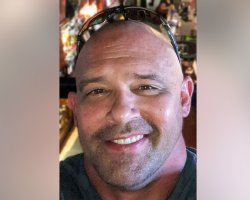After Years of Advocacy, U.S. Opioid Prescribing Is Declining

There is good news to report, though it is limited in scope. According to recent data, opioid pain reliever prescribing rates are declining for Americans with private insurance and Americans struggling with a variety of ailments. Unfortunately, those same reports indicate opioids are now so easy to get on the streets as counterfeit pills, fentanyl, heroin, etc., that addicts don’t need a prescription to get drugs.
However, the fact that rates of opioid prescribing have consistently receded in recent years is a good sign. It’s a move in the right direction, considering that opioid prescribing was one of the major phenomena that initially launched the opioid epidemic in the late-1990s and the early-2000s. Seeing prescribing rates decline shows the American people are not making the same mistake repeatedly, year after year.
Focusing on treating opioid addicts through residential drug rehab centers and ensuring patients who are not yet addicted receive non-addictive pain relief options will be key to overcoming the opioid addiction nightmare.
New Findings Bring Good, Albeit Limited, News
A recent research paper published in the Public Library of Science reported that, for patients with private health insurance, prescriptions for opioid pain relievers are declining. Even among patient groups that have never seen a drop in opioid prescribing, like cancer patients, these groups have seen a notable reduction in overall opioid prescribing.
“These findings highlight the need to better understand how declines in prescribing are influencing the management of pain among these patient populations...”
Study authors Sachini Bandara and Emma McGinty of Johns Hopkins Bloomberg School of Public Health in Baltimore, along with colleagues at the University of Michigan, were the first to report on what is being seen as a profound shift in public health policy across America. In their words, “We find that from 2012 to 2019, there were declines in opioid prescribing for individuals with chronic non-cancer pain and individuals with cancer without corresponding increases in receipt of non-opioid therapies. These findings highlight the need to better understand how declines in prescribing are influencing the management of pain among these patient populations, particularly as the [Centers for Disease Control and Prevention] is currently updating opioid prescribing guidelines for chronic pain.” From cancer patients to patients seeking help for back pain, headaches, and even arthritis, doctors have shifted to a more conservative approach to opioid prescribing.
From 2012 to 2019, opioid prescribing for cancer-related pain dropped from 86% of patients receiving prescriptions to 78% receiving prescriptions. The figures for patients who received opioids for any other type of pain dropped from 49% to 30%.
Conversely, doctors are increasing their prescribing rate regarding non-opioid pain relief options, like OTC medicines and holistic pain relief treatments. In the case of cancer patients, as opioid prescribing declined, doctors increased non-opioid pain treatments from 74% of patients receiving such treatments to 78%.
Finally, even for patients still receiving opioid prescriptions, the data shows fewer patients are receiving high doses of opioids. Also, fewer patients are receiving more than a one-week supply of opioids.
Both those details, lower doses of opioids being prescribed and less than a one-week supply of opioids, are key prescribing practices the Centers for Disease Control and Prevention has been trying to convince doctors to adopt since at least 2016. That year, the CDC established its landmark Guideline for Prescribing Opioids for Chronic Pain. In that paper, the CDC called for doctors to become extremely conservative in their prescribing, particularly regarding the strength of dosage and duration of the prescription.
The fact that doctors are prescribing opioids less often, prescribing less potent opioids when prescribing them, and prescribing shorter durations of opioids indicates a profound shift in the American medical sector’s view of opioid pain relievers.
It seems the medical sector is beginning to view opioid pain relievers as a last-resort medicine, which is the correct way to view them.
The Battle Against Opioid Addiction Is Far from Over
More Americans die from opioid drugs each year than in the previous year. According to the National Institute of Drug Abuse, opioids account for at least two-thirds of all annual drug fatalities. In 1999, about 5,000 Americans died from opioids. In 2010, that figure almost quadrupled to 21,089 deaths. In 2017, the year after the CDC released its prescribing guidelines, the figure doubled, with 47,600 people dying from drug overdoses. In 2019, 68,630 people died from opioid overdoses.

Despite a reduction in opioid prescribing, deaths connected to opioids are still skyrocketing. That’s because synthetic opioids, primarily fentanyl analogs, are now widely available on the illicit drug market. Addicts no longer have to “doctor shop” (pretend to be a chronic pain patient and seek prescription opioids from multiple doctors at once). Addicts can easily get opioids on the street.
Finally, extremely potent opioids (like fentanyl) are now being detected in other drug supplies like cocaine, meth, and marijuana. That means drug users intentionally trying to avoid exposing themselves to opioids may still consume opioids without even knowing it. An addict who is used to cocaine, meth, or marijuana who accidentally consumes fentanyl-tainted drugs is at extremely high risk for an overdose.
Addiction Treatment Is the Way Out of the Opioid Epidemic
A rising public awareness that opioid pain relievers were over-prescribed and pushed on the American people by pharma manufacturers and distributors is a good thing. But the opioid addiction epidemic is still worse now than it was before doctors began pulling back on prescribing.
Those addicted to drugs must be encouraged to enter drug and alcohol rehab centers, no matter their drug of choice. In a world where no degree of drug use is safe, their life truly does depend on it. Parents and family members of addicts must not give up until their addicted loved ones get help. Only by ensuring all addicts seek treatment and overcome their drug addictions will America finally break free from the opioid epidemic that has gripped the nation for over 20 years.
Sources:
- PLOS. “Trends in opioid and non-opioid treatment for chronic non-cancer pain and cancer pain among privately insured adults in the United States, 2012–2019.” Public Library of Science, 2022. journalsplos.org
- USNews. “U.S. Opioid Prescriptions Are Declining.” U.S. News, 2022. usnews.com
- CDC. “CDC Guideline for Prescribing Opioids for Chronic Pain.” Centers for Disease Control and Prevention, 2016. cdc.gov
- NIDA. “Overdose Death Rates.” National Institute on Drug Abuse, 2022. nida.nih.gov


 ®
®